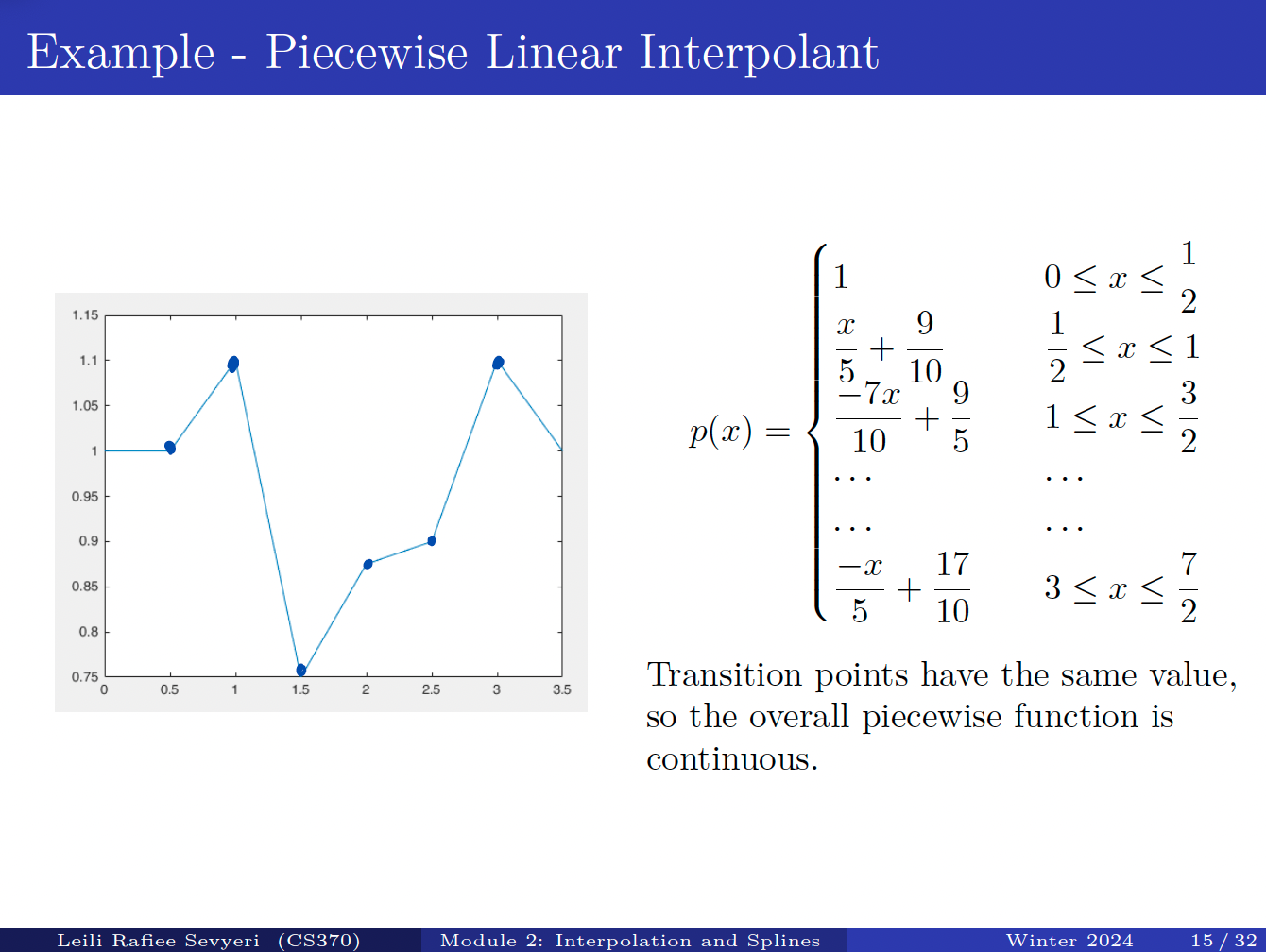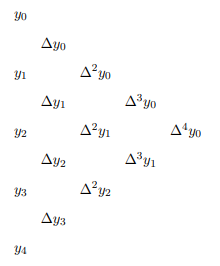Interpolation
Given a set of points, we want to model the general trend of the points by finding a smooth curve that fits the dataset. This is actually what we do in machine learning.
Problem Formulation
Given . estimate for any point such that .
CS370
2 ways to go about interpolation:
When there are very few points (<6), we do Polynomial Interpolation
- Vandermonde Matrix (monomial basis)
- Lagrange Form (Interpolation) (lagrange basis)
However, then, when there are lots of points, your 1 function might be of degree too high and it won’t be as smooth anymore. Therefore, a better strategy is to use Piecewise Interpolation
- Piecewise linear
- Cubic Spline

There also is another category of interpolation called Hermite Interpolation, where we want to set the derivatives at control points.
Polynomial Interpolation
If we have 5 points, we can find a polynomial of degree 4 passing through these points.
We use the equation below:
Now, it looks very complicated at first, but we can calculate the finite differences very easily. Use the triangular table:

Interpolation in Python
There’s logic for interpolating racing lines.
I need to reference both the TUFTM, and some implementation that the guys at F1TENTH did.
But there’s this Scipy function for interpolation:
class_ scipy.interpolate.interp1d(_x_, _y_, ...)